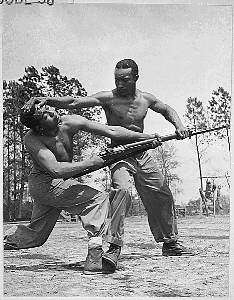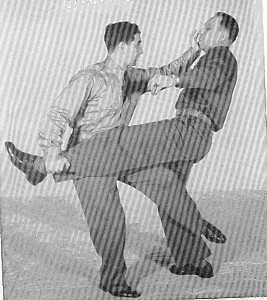Not certain of the time period of the pictures that went into this animation, but the parry leading into an elbow strike looks familiar:
U.S. Marine Corps Individual Combat Course, July 1944 describes the use of judo in marine corp training during WWII, and for illustration they show a 1943 photo of an unarmed soldier defending against a bayonet thrust. I gotta say, grabbing the rifle barrel makes more sense than parrying the blade.

Judo instruction is one of the high spots in the life of the latest addition to the Leatherneck Marines here [at Montford Point, North Carolina]. An instructor shows a recruit how to make the enemy's bayonet useless. Cpl. Arvin Lou Ghazlo, USMC, giving judo instructions to Pvt. Ernest C. Jones, USMCR.

